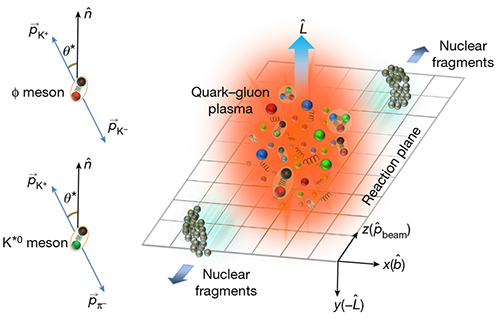
Figure 1 A schematic view of the coordinate setup for measuring vector mesons global spin alignment in heavy-ion collisions.
Supported by the National Natural Science Foundation of China (Grant No. 11890710, 12025501, 12147101), the research group led by Prof. Yu-Gang Ma from Fudan University, in collaboration with domestic and oversea scholars, observed the vector meson global spin alignment in relativistic gold-gold collisions at Relativistic Heavy Ion Collider (RHIC), which opens a potential new avenue for studying the behavior of strong force fields in heavy-ion collisions. The research results were published in Nature on January 18, 2023, with the title “Pattern of global spin alignment of Φ and K*0 mesons in heavy-ion collisions”. (article link: http://www.nature.com/articles/s41586-022-05557-5)
Spin is the intrinsic angular momentum of elementary particles. If one thinks of a spinning particle as a spinning top, similar to the direction of the spinning axis of the top, the spin of the particle also has a direction. In non-central heavy-ion collisions, a huge orbital angular momentum will be generated along the normal of the reaction plane, which will be transferred to Quark-Gluon Plasma (QGP) in the form of fluid vortex, and then particles in the QGP can be polarized with respect to the reaction plane through spin-orbit interaction, the so-called “Global Polarization” effect.
The research team established a method to measure the global spin alignment of Φ and K*0 mesons in relativistic heavy-ion collisions: by tracing the angular distribution of the decay products in the rest frame of mother particles with respect to the reaction plane, it is converted into the probability that the mother particle is in its three spin states, so as to realize the measurement of the spin alignment density matrix of the mother particle (Figure 1). In the absence of the global spin alignment signal for vector mesons, the measured particles have the same probability of being in three spin states, as shown by the K*0 meson results; However, for Φ mesons, the probability of their spin in the one state is higher than that of the other two, which becomes the first observation of global spin alignment in experiment.
The experimental observation can be qualitatively explained by a theoretical scenario by introducing local fluctuations with strong interactions in hot-dense nuclear matter created at RHIC. The discovery led by Ma’s group and his collaborators gives the experimental evidence for the new effect of "Global Polarization" of hot-dense nuclear matter, and supports the spin global polarization theory of hyperons and vector mesons proposed by Chinese theoretical nuclear physicists, and provides a new direction for the study of strong interaction.

Add: 83 Shuangqing Rd., Haidian District, Beijing, China
Postcode: 100085
Tel: 86-10-62327001
Fax: 86-10-62327004
E-mail: bic@donnasnhdiary.org
京ICP备05002826号 文保网安备1101080035号 Copyright 2017 NSFC, All Right Reserved